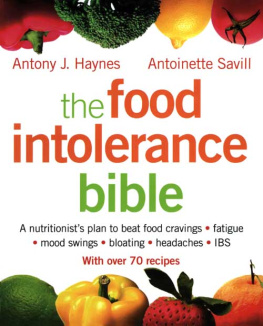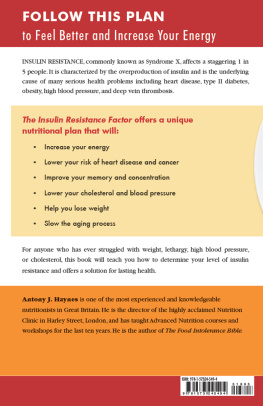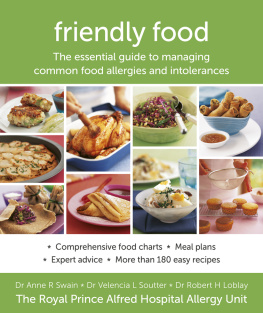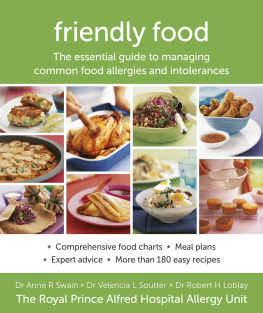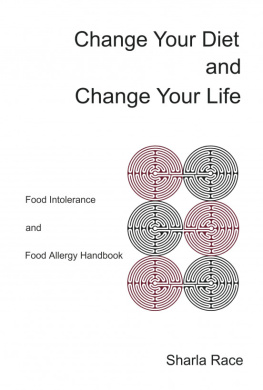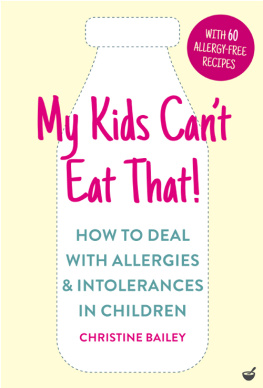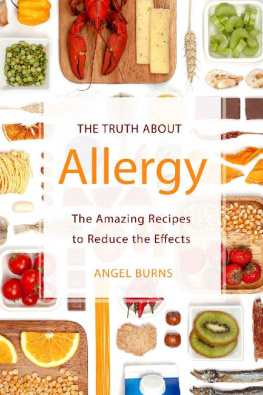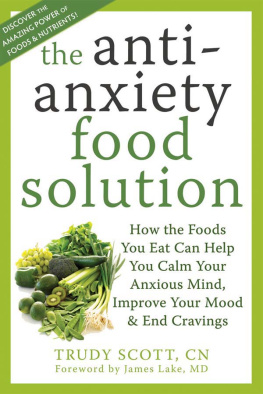
Why Should I Read this Book?
- Do you frequently experience abdominal bloating, even when you havent over-eaten?
- Do you have symptoms of Irritable Bowel Syndrome?
- Do you have periods during the day when your brain simply does not work as it should?
- Do you suffer from mood swings?
- Are you abnormally tired?
If your answer is yes to one, two or more of these questions, then you may well be experiencing the effects of an intolerance to one or more foods.
You may have picked this book up because you know or suspect that you react adversely to a food or foods. This book is all about food intolerances and how to deal with them and with connected conditions ranging from Chronic Fatigue Syndrome (ME), an overgrowth of the yeast Candida albicans (thrush), leaky gut syndrome, excessive stress, parasitic infections, Irritable Bowel Syndrome (IBS), brain fog and even skin conditions such as eczema and respiratory problems such as asthma.
Main Aims of this Book
1. To help you to understand what an intolerance is and discover whether or not you have one (or more) or not
2. You will learn about various ways of confirming your hunch that you have a food intolerance.
3. You will be shown why you might have food intolerances, and their causes and connections with other conditions. This will help you to identify which of these may be relevant to you in addition to food intolerances. The longer you have had food intolerances, the more likely it is that you will have other, related conditions as well.
4. You will be presented with an action plan for dealing with food intolerance and improving digestion. Putting the action plan to work is made all the more possible by the great recipes prepared by Antoinette, which are free of the most common foods to which people have an intolerance. The recipes are designed to give you a head start and make it as easy as possible to implement the necessary changes in your diet. While this can often require no small effort, if food intolerance is to blame it is vital to helping you overcome your symptoms.
5. To help you improve your health by helping you to identify what your food intolerances are, the connected conditions and how to deal with them.
Throughout this book there are questionnaires to help you assess your health and to chart your progress back to better health.
Food Intolerance or Food Allergy?
Before going any further I am going to clarify the distinction between a food allergy and a food intolerance. This has been a source of confusion, not least for those in the health profession.
Originally, the word allergy was designated to mean any adverse reaction to any substance inhaled or eaten or coming into contact with the skin, with no specific limitations on the specific nature of the immune reactivity. However, over time, the term food allergy has been taken on by allergists and relates to immune reactions mediated by the immunoglobulin E (IgE), which could be to a food or something inhaled or to which we might come into direct physical contact.
Immunoglobulin is a protein that carries out various roles in the bodys immune response. There are five: immunoglobulin G, A, M, D and E. Immunoglobulin G (IgG) plays the most significant role of the five in terms of food intolerance, whereas immunoglobulin E (IgE) triggers the most significant reactions. However, not all food intolerance reactions are related to our immune system. For example, tyramine found in strawberries, cured meats and cheese can trigger migraines in some people, and this is a brain reaction, not an immune-based one.
Reactions mediated by IgE are referred to as true food allergies somewhat of a misnomer since it implies that any other type, such as a food intolerance, is untrue. Having said this, these true food allergy reactions are almost always immediate in their manifestation and therefore most often can be traced back to a particular cause. They can often affect health in a significant and rapid manner swollen lips and tongue, asthma attack reactions can be life-threatening, which is why great care needs to be taken to avoid the trigger foods or substances. Peanut allergy and shellfish allergy, for example, are perhaps the most well known. Another example is an allergy to latex (rubber) of allergies triggered just by coming into contact with a substance, this is the one on the most rapid increase. So much of a problem is this specific allergy that at least one hospital has had to change the material of its surgical gloves lest a nurse or doctor succumb to anaphylaxis.
Anaphylaxis is an extreme physical reaction the reason for which is not fully understood that often requires adrenaline to counter the extreme stress-reaction caused in the body.
Allergy Is on the Increase
While allergies affect a far smaller proportion of the population than food intolerances, their effects are not insignificant. Unfortunately, allergies are on the increase some 50 million Americans suffer from some type of allergy on a yearly basis. According to the American Academy of Allergy, Asthma and Immunology, allergy is ranked as the sixth leading cause of chronic disease today, at a cost of $18 billion a year. It is believed that the evidence from the UK is very similar to that in the US. Two recent estimates of the prevalence of allergy in the US were 9 per cent and 16 per cent, and the prevalence of the two most common allergies, atopic dermatitis (dry skin, similar to eczema) and allergic rhinitis (persistent runny nose), have been increasing since the mid- to late 1980s.
Food Intolerance Is Escalating, Too
As mentioned, food intolerance is the name for reactions mediated by immunoglobulin G (IgG). These reactions can manifest up to 72 hours after exposure, making the trigger food or substance much more difficult to identify. However, it is worth noting that some food intolerance reactions are not typically mediated by immune reactivity.
While people who suffer from IgG reactions rarely need immediate medical attention, the symptoms can certainly reduce their quality of life and cause longterm illness. The proportion of the population who suffer from at least one food intolerance is as much as 45 per cent (and that may be a conservative estimate), making it a significant issue in the nations health.
Evidence shows that the prevalence of food intolerance is escalating, but because the methodology used to analyse food intolerance is more recent than that for IgE allergy, there are no hard-and-fast figures to compare with the prevalence of decades ago.
At least 45 per cent of the population suffer from food intolerance.
A Wide Range of Symptoms
The range of food intolerance symptoms is as long as it is diverse. You would hardly believe that so many symptoms could be attributable to food intolerance. Simply having interviewed thousands of clients who have avoided certain foods for periods of time and then reintroduced them into their diets, and having listened to their observations about their symptoms, confirms the existence of food intolerance. There is also much evidence today based on the evidence of immunological testing that food intolerance does exist (although, as stated above, not all food intolerances are mediated by immune IgG activity). In spite of all the evidence, however, there are some who refuse to acknowledge food intolerance as an issue, and in particular as a reaction that can cause mental symptoms. This is an issue that I would like to clear up right now, so the rest of this Introduction is devoted to showing you evidence, some of it many years old and some of it very recent, that proves the existence and relevance of food intolerance to a wide range of symptoms.
Next page
